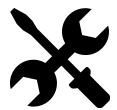CDs are for documenting the design
Once the owner and the architect are satisfied with the plans (and the cost), Construction Documents can begin. In this phase, no further design changes are (hopefully) required, and the whole design team focuses on producing a set of plans and specs describing all the details required to build the project, from the structural and mechanical systems down to the finish materials and fixtures – these are the ‘construction documents.’
In projects pursuing green-building certification, there will also be a set of design documentation related to the certification protocol’s requirements. Usually, documentation is submitted once at the end of the design phase, and then again when construction is complete to confirm compliance with the certification protocols.
Detail of CDs depends on the method of project delivery
In a Design-Bid-Build project, a complete (or nearly complete) CD set will be released to contractors for their use in developing bids. In this case, there may be a short phase between CDs and CA known as the Bid Phase where the design team will help you go through the bidding process with contractors. In a project using CM At-Risk delivery, the GC/CM will be heavily involved in reviewing the plans during CDs and advising the owner and design team on cost and constructability issues.
FF&E and Owner-Purchased items
During CDs and into construction you will also work on selecting and sourcing the furnishings, fixtures, and equipment that will go into the building – often referred to as FF&E. This includes furniture, IT equipment, some stage equipment, gallery or museum fittings, etc., and it is often purchased directly by the owner outside the construction contract.
This method of purchase saves you the contractor’s markup cost, but any equipment requiring coordination with construction trades for installation should remain in the base contract and be purchased through the contractor (e.g. theatre seating, hard-wired decorative lighting, museum casework, commercial kitchen equipment, or anything that is ‘attached’ to the building).
This post is also available in: French




